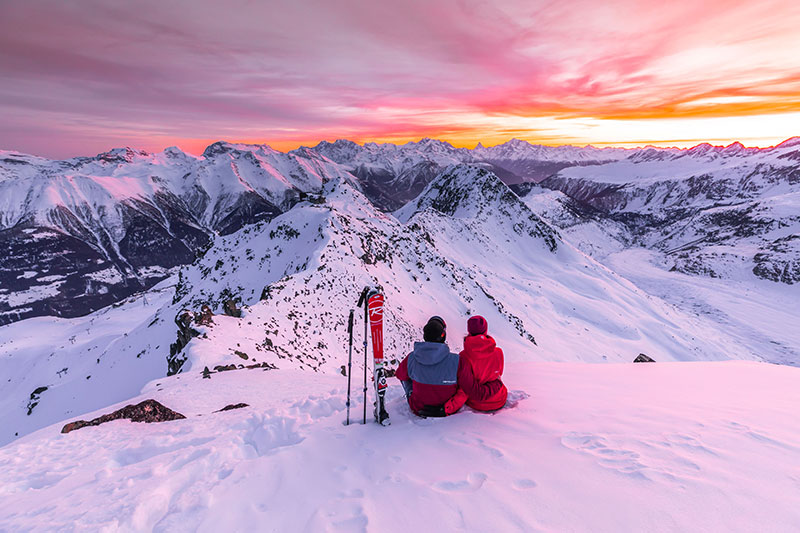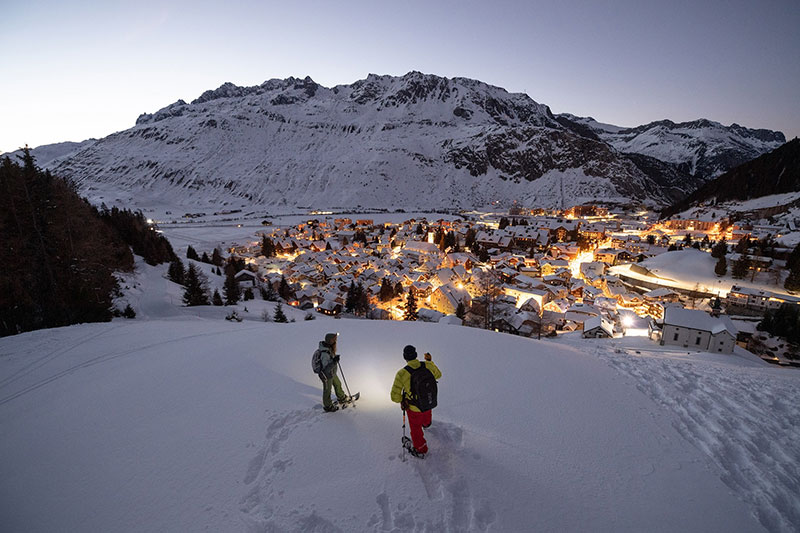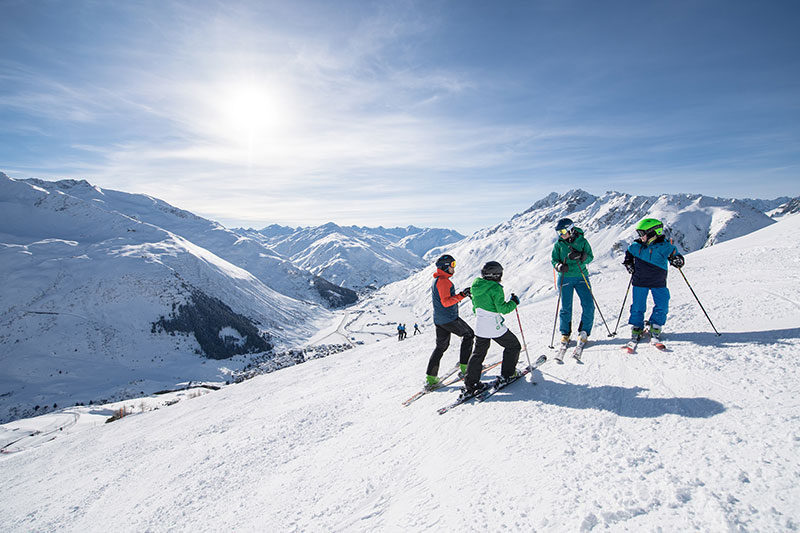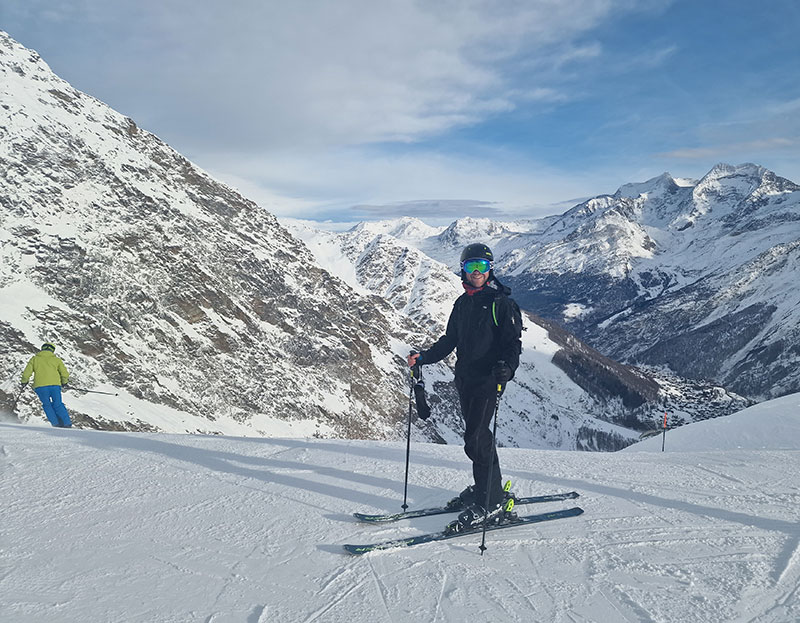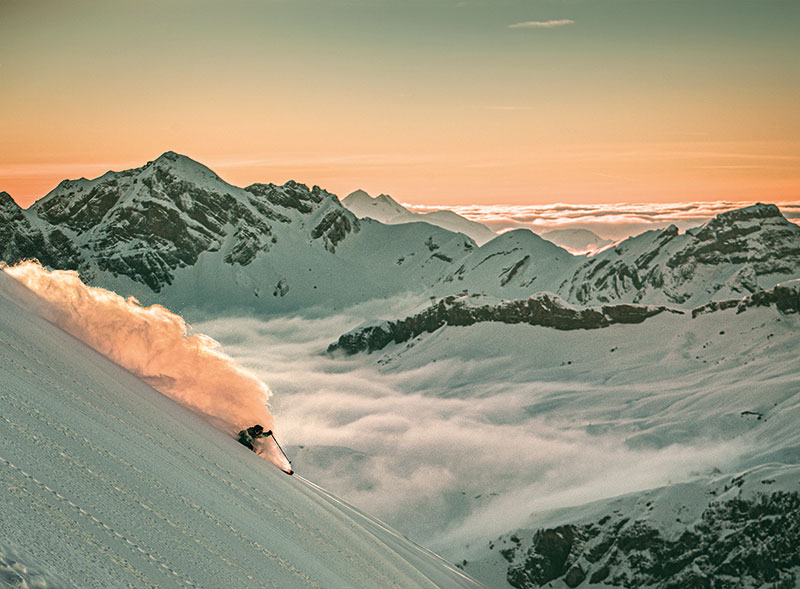With support from Switzerland Tourism, we recently checked out the facilities, infrastructure, snow conditions and après vibes of four first-rate Swiss resorts. Here’s what we learnt.
Aletsch Arena
Better known by the Swiss than foreigners, the ski-in ski-out resort of Aletsch Arena links three charming car-free villages - Riederalp, Bettmeralp and Fiescheralp – with 35 lifts providing “snow guaranteed” conditions up to 2,869m, according to the local tourist board. The pistes are groomed to perfection – the local piste bashers have a trophy cabinet full of awards – and the family-friendly atmosphere is relaxed and understated. But Aletsch also has a few aces up its sleeves: it is home to the greatest glacier in the Alps and located within the Jungfrau-Aletsch UNESCO World Heritage Site, meaning the scenery in all directions is a picture of Swiss alpine bliss.
MyOutdoors Review: I loved this resort. The slopes were joyously uncrowded, the pistes were groomed beautifully (ideal for my first alpine skiing for 2 years after a pandemic-enforced break) and the atmosphere was relaxed and friendly. Seeing the Great Aletsch Glacier from the viewpoint at Moosfluh was really quite magical, but the highlight was the ski-in ski-out style – my favourite memory is cruising downhill towards Bettmeralp after the final lift up, with the sun setting in the distance across a horizon of jagged, snow-capped peaks.
Best for: families, beginners, intermediates
Key attributes: perfectly groomed slopes, ski-in ski-out, quiet family atmosphere
Kms of slopes: 104km
Altitude range: 1,925m (Riederalp) to 2,869m (Eggishorn)
Ski pass price: 65 CHF/day (based on 10th Feb 2023)
Public transport: Train to Betten Talstation and cable car to Bettmeralp
Where to stay: Hotel Waldhaus (Bettmeralp)
Where to eat: Restaurant Gläcktricka (Bettmeralp)
More info: aletscharena.ch
Andermatt
Andermatt can accurately be described as unique. Its history is quite remarkable, going through a series of reincarnations from sleepy agricultural backwater to important trading outpost to strategic military base for the Swiss army. And now, after yet another re-imagination, it has changed yet again – this time into an up-and-coming, swanky, desirable ski resort with epic snow, superb infrastructure, stylish hotels and gastronomic delights. This transformation has been spearheaded by Egyptian real estate mogul Samih Sawiris, courtesy of a 2 billion CHF investment. The result is a resort on the rise, offering something for everyone – particularly when you consider the joined-up ski areas of Andermatt, Sedrun and Disentis. For more experienced skiers and boarders, Gemsstock (2,961m) delivers demanding slopes, deep snow and freeriding fun with non-stop descents of up to 1,500m, while Gütsch (2,344m) and Schneehüenerstock (2,600m) have red and blue runs galore for intermediates and ambitious beginners.
MyOutdoors Review: On first impressions, the extensive development of Andermatt – think big, brash, stylish new hotels and swanky apartment blocks – seems a little (well) un-Swiss, but I was very quickly won over by the resort. I warmed to its unique charm quickly. The skiing was varied, exciting and thoroughly enjoyable, with great snow, and if I had to go back to any of these four resorts I’d probably choose Andermatt. The accessibility from Zurich Airport was hassle-free and time-efficient and the culinary offerings were first-rate. A particularly fond memory was an evening in a wood-fired hot tub followed by a traditional Swiss cheese fondue in Göschenen.
Best for: intermediates, experts, freeriders
Key attributes: superb variety, new gondolas, first-rate snow record, excellent food, only 2hrs 18 mins from Zurich airport
Kms of slopes: 180km
Altitude range: 1,444m (Andermatt) to 2,961m (Gemsstock)
Ski pass price: 89 CHF/day (based on 10th Feb 2023)
Public transport: Train to Andermatt, via Brig or Göschenen
Where to stay: Radisson Blu Hotel Reussen
Where to eat: The Chedi, The Japanese at Gütsch, Gasthaus Tell
More info: andermatt.ch
Saas Fee
Sometimes nicknamed the ‘Pearl of the Alps’, Saas Fee has a long-standing reputation as a top-class ski destination. Its USP is altitude - you’ll spend most of your time skiing between 2,500m and 3,500m above sea level, which is a real selling point in this warming world. The Metro Alpin funicular railway takes skiers up to 3,500m at Mittelallalin, linking to T-bars rising higher to 3,600m – an altitude that guarantees good snow for a longer season. Until very recently you could ski all summer long in Saas Fee, and the resort is also home to one of the largest glacier ski areas in the Alps. The village itself is charming, good-looking and pedestrian-friendly, with lively après options if you’re after that. Its location in a bowl surrounded by 18 towering 4,000m peaks is stunning. The Saas Fee base-area has a sizeable, flat section for beginner lessons, while the rest of the resort has 150km of blue, red, black and yellow pistes to keep intermediates (and most experts) perfectly happy. If you so desire, you can combine your visit to Saas Fee with skiing at nearby Saas Grund, Saas Balen and Saas AlmageII.
MyOutdoors Review: For a confident and ambitious (but somewhat unrefined) intermediate skier like myself, Saas Fee is a dream – a place where you can start at 3,600m above sea level, shred downhill for almost 2km on long sweeping red runs, and then do it all over again for the sheer fun of it. That’s what skiing is all about, surely.
Best for: beginners and intermediates
Key attributes: high-altitude skiing, snow-assured, long season
Kms of slopes: 150km
Altitude range: 1,800m (Saas Fee) to 3,600m (top of T-bar above Mittelallalin)
Ski pass price: 79 CHF/day (based on 10th Feb 2023)
Public transport: Train to Stalden Saas and Postbus 511 to Saas Fee

